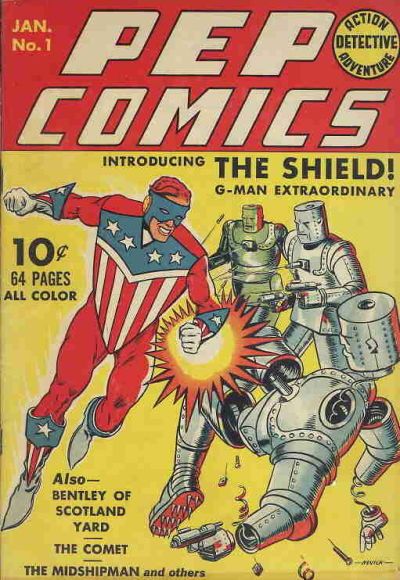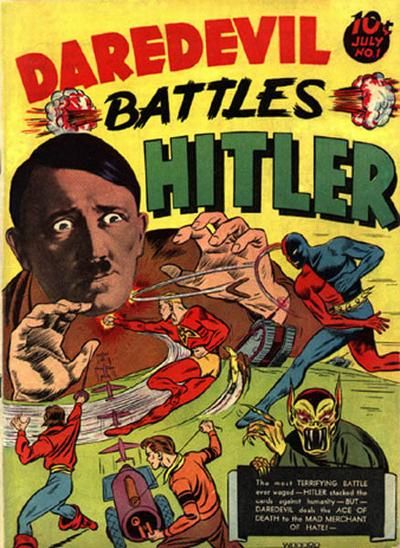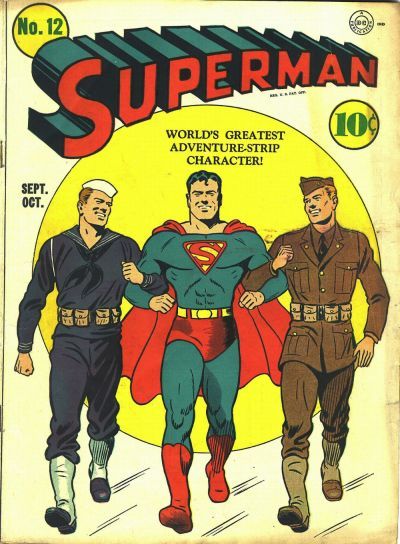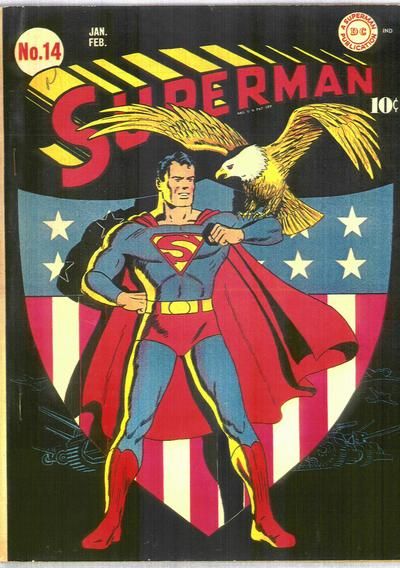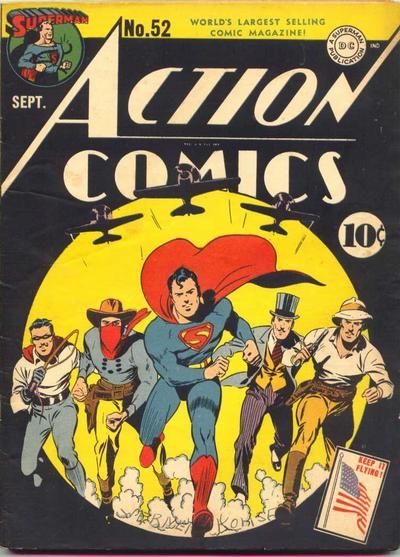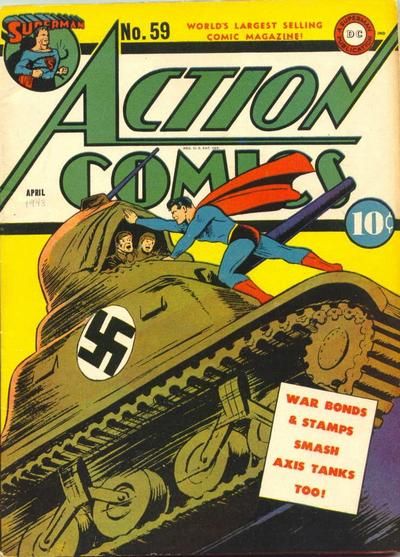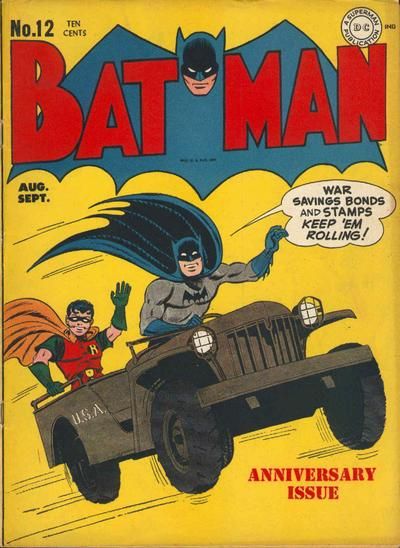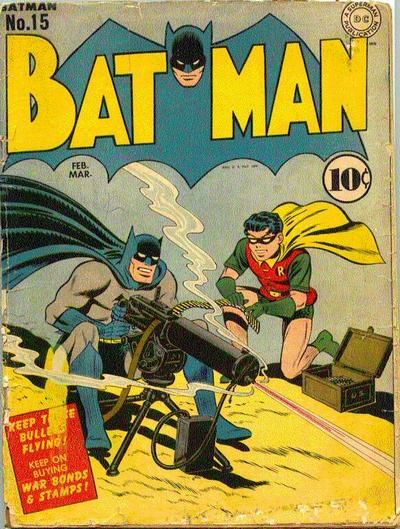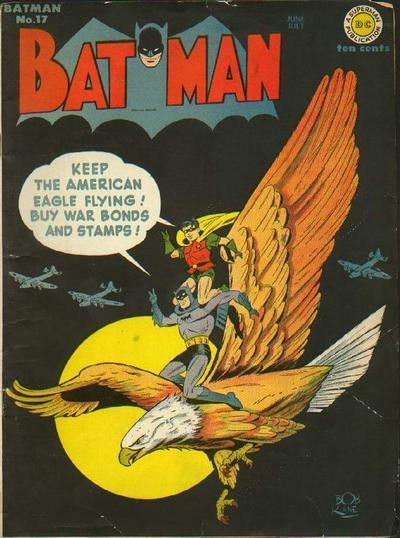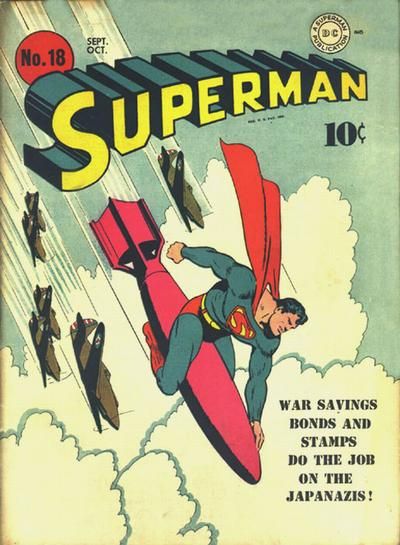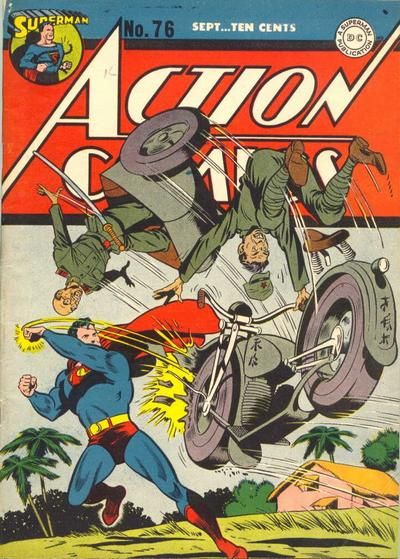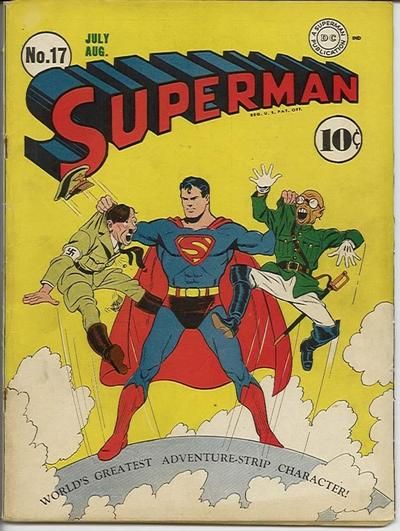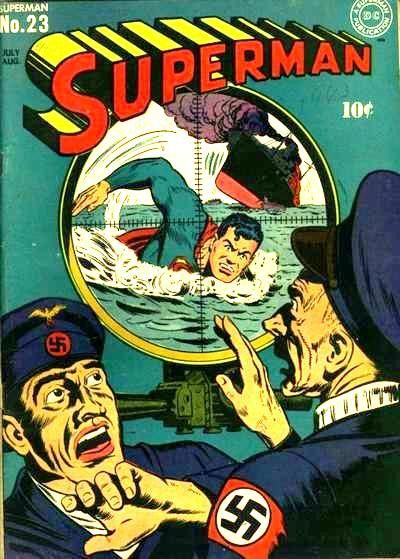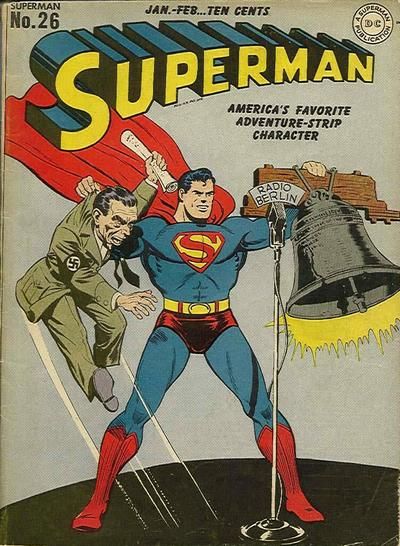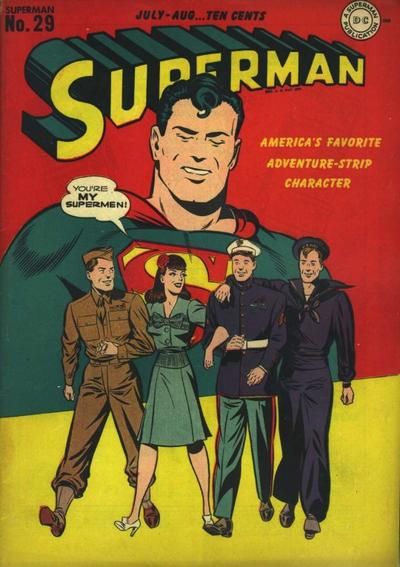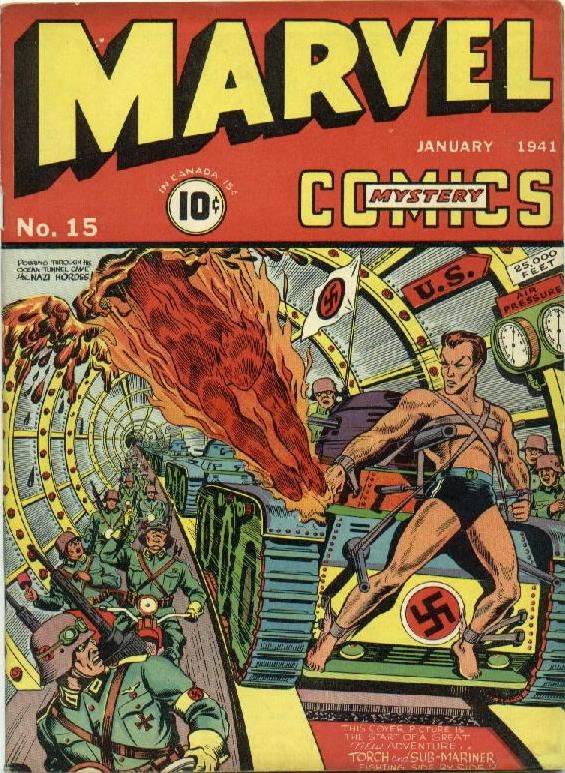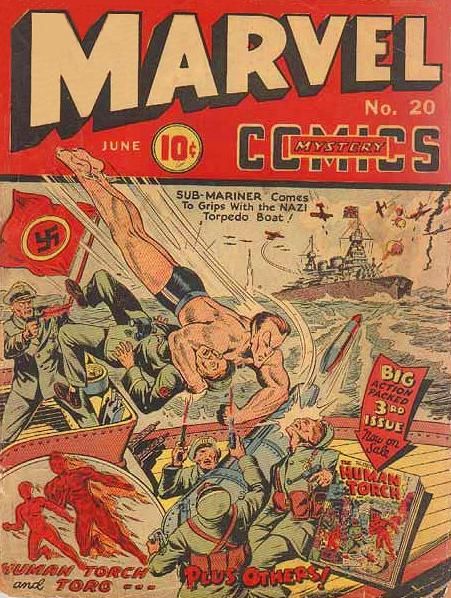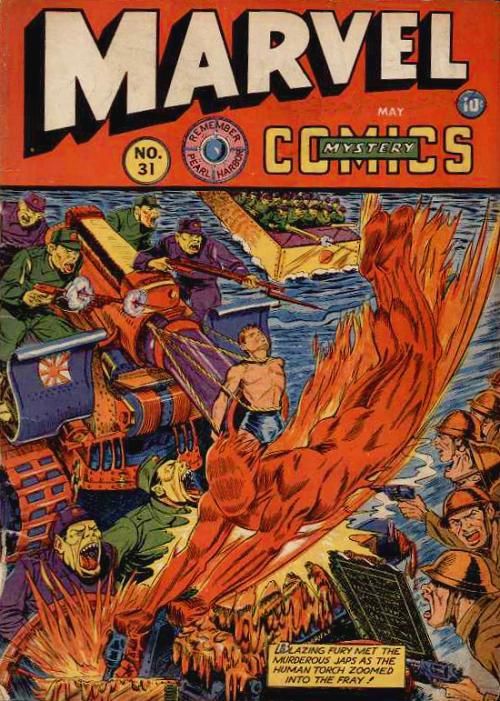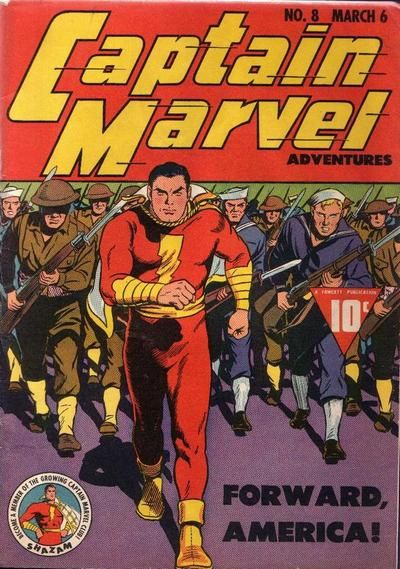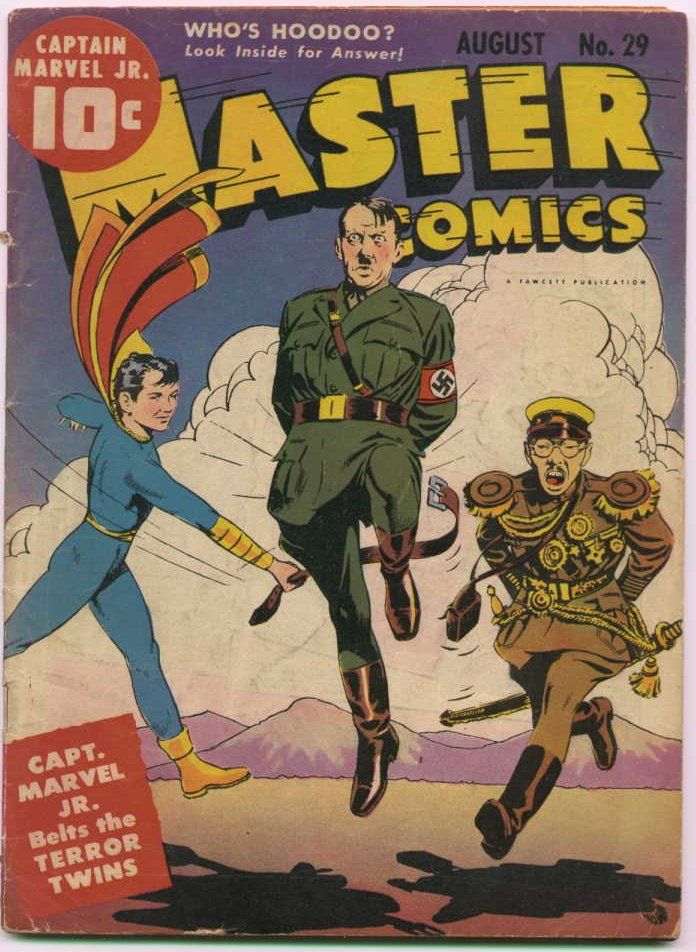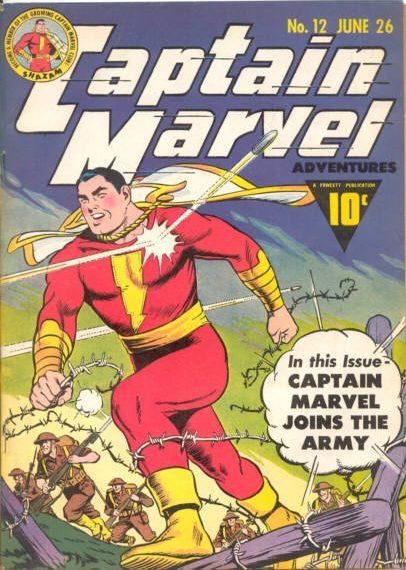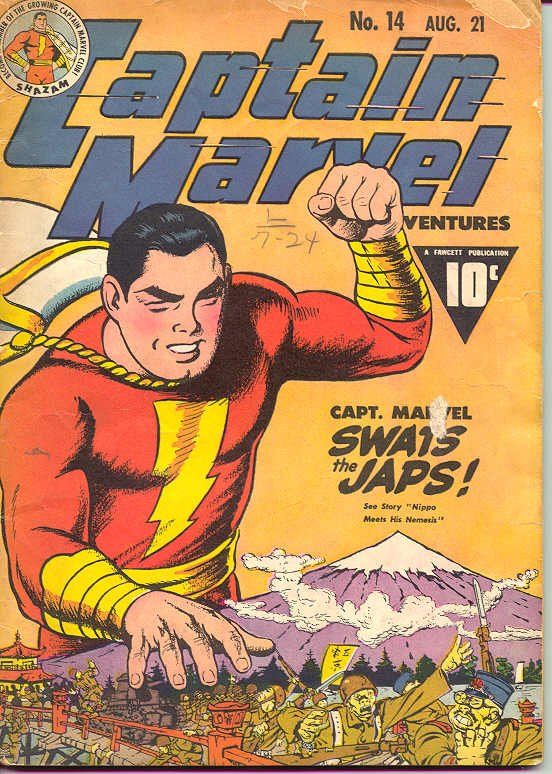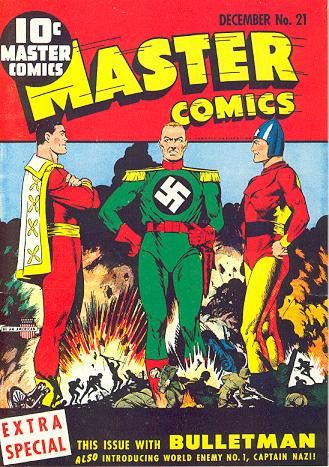Here is the latest installment of Comic Book Questions Answered, where I answer reader-submitted questions! Please feel free to send in any comic book questions that have been puzzling you!
Today, we look at a pricing request and an examination of how superhero comic books dealt with World War II during World War II.
Enjoy!
Reader Rita Cruz asks:
I have a cmic book I found and would like to know if anyone can help me find out the value of it. There are so many websites I dont know which web to log onto.Its called THE ADVENTURES OF SUPERMAN DOOMSDAY the year on there is 1992in a triangle with a # 47 under it, under the DC symbol is a square with the # 497 DEC 92 I hope someone can help me . THANK YOU!
Rita, that comic book, part of the "Death of Superman" storyline, goes for between a dollar and two dollars on the current market.
Reader Jeremy Block wanted to know about comic books during World War II that dealt with World War II.
An interesting time in comic books was directly before World War II, where Europe was at war and America was still divided with whether to get involved.
Comic books, however, were much willing to take stances on the war abroad (perhaps having something to do with the fact that most of the publishers still had familial ties to Europe, not to mention the fact that a good deal of the folks working in comics were Jewish), which led directly to the proliferation of the "patriotic hero."
The Shield, in the pages of MLJ's Pep Comics, was the first.
Lev Gleason's Daredevil #1 was one of the most straightforward...
Timely Comics' Captain America, though, was the most popular.
The famous shots of Captain America hitting Hitler, however, were put out BEFORE the United States went to war.
In true Golden Age fashion, the covers bore little connection to the interiors of the comic.
So the first year or so of Captain America Comics had Captain America fighting on the homefront against saboteurs. The first issue did introduce the Nazi supervillain, Red Skull.
Superman was doing a series of propaganda covers in the months leading up to Pearl Harbor...
and soon followed that with a direct response to the events of Pearl Harbor on the covers of Superman and Action Comics...
DC, as the most popular comic book company, steered clear of specifically dealing with the war in their comics, for the most part.
They mostly spent their efforts stressing the importance of purchasing War Bonds to finance the war and they did quite a nice job at that, with some dynamic covers...
Here's one, a little later on, with a different request for aid...
And, of course, while not asking for help with bonds, they also did standard war propaganda covers...
Eventually, though, while Batman would stay at home, DC decided to have Clark Kent become assigned to a Navy ship towards the end of the war (after they came up with a story why he could not go to war, as covered in a Comic Book Urban Legends Revealed installment a ways back).
Timely, meanwhile, quickly moved from fighting saboteurs to fighting fictional Nazis and Japanese villains...
Besides their fervent patriotism and striking cover work, these covers are also marked by some over-the-top racism towards America's enemies, in particular, the Japanese.
Fawcett Comics, probably the second-most popular comic book company during World War II, also mostly stayed out of the war (besides propaganda), but they got more involved than Superman...
They introduced the villain, Captain Nazi.
Quality Comics also featured fights against Nazis, particularly with their Military Comics and National Comics (featuring Uncle Sam) titles.
And that is really about that, Jeremy.
Hope you and your kids could use the info!
And again, if anyone else has some questions they'd like answered, drop me a line at bcronin@comicbookresources.com!


